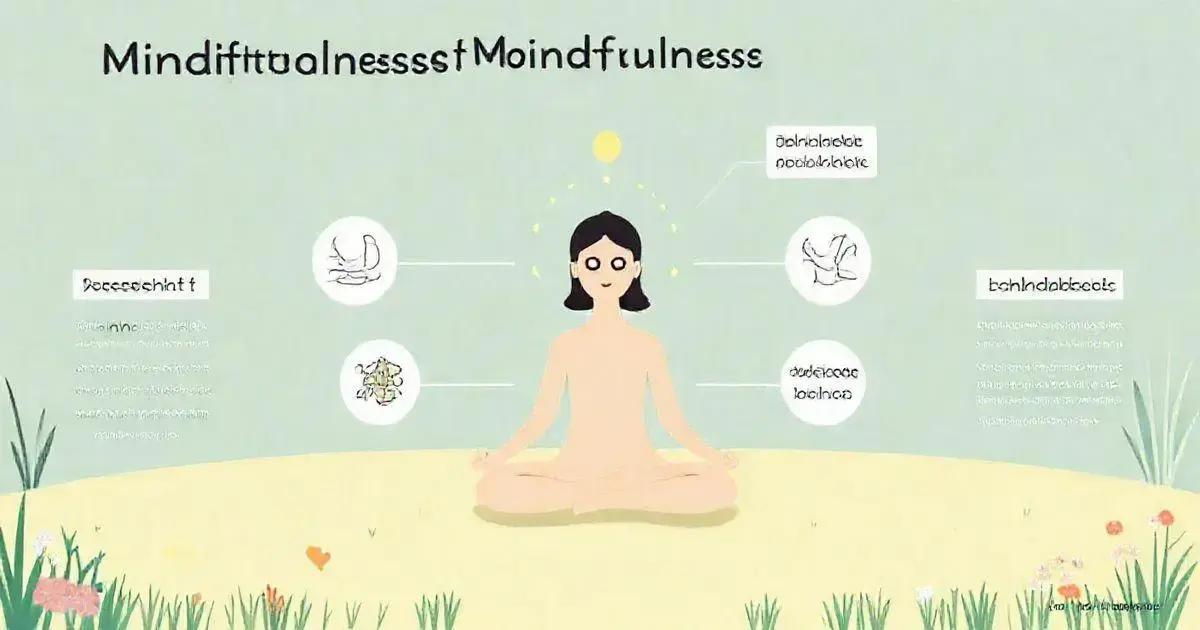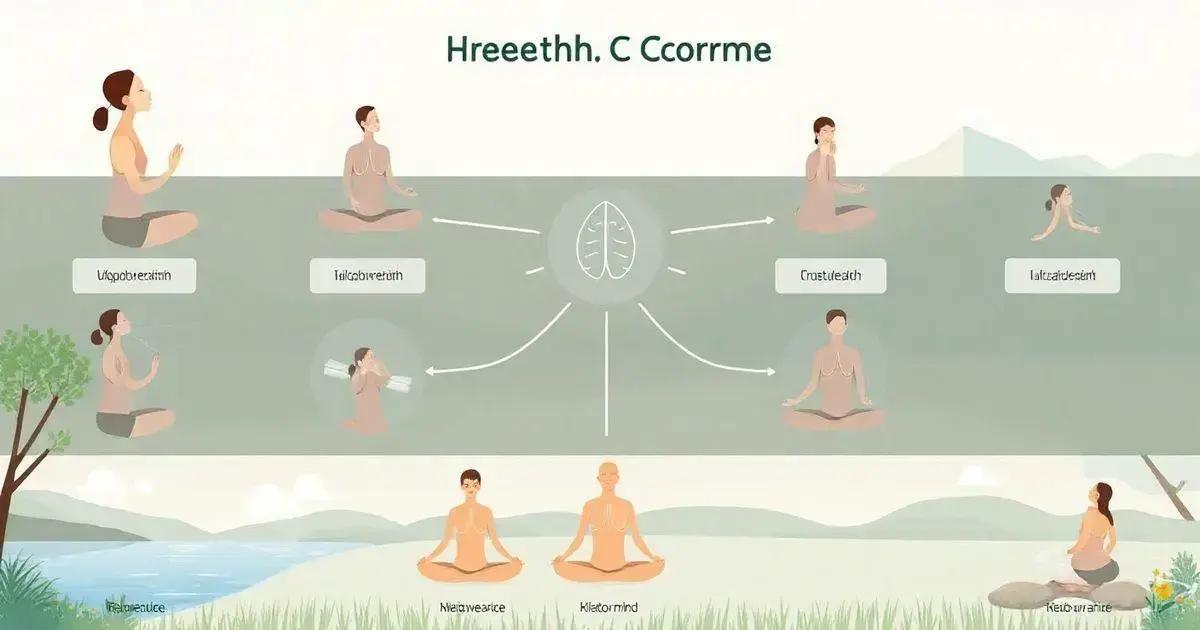Components of Mindfulness Therapy: Unlocking Mental Well-Being
Components of mindfulness therapy are essential for cultivating mental well-being. These key elements work together to help individuals achieve a state of balance and clarity. With a focus on awareness and presence, mindfulness therapy can deeply impact emotional health.
The core components include focused attention, self-awareness, and acceptance. These practices guide individuals in becoming more in tune with their thoughts, feelings, and bodily sensations. Over time, they contribute to a more grounded, peaceful state of mind.
Curious about how these components can benefit your life? Keep reading to learn how they can enhance your emotional well-being and overall mental health.
Understanding Mindfulness Therapy
Understanding Components of mindfulness therapy is crucial to grasping the broader aspects of mental wellness. This therapy combines ancient techniques with modern psychological practices, helping individuals manage stress, anxiety, and depression.
Mindfulness therapy focuses on being present in the moment, which can shift how you experience your thoughts and emotions.
What is Mindfulness?
Mindfulness is the practice of paying full attention to the present moment without judgment. It encourages awareness of our thoughts, feelings, and bodily sensations. This process allows individuals to observe their reactions and develop a deeper understanding of their mental states.
Importance of Mindfulness Therapy
Mindfulness therapy is essential as it fosters emotional resilience. By practicing mindfulness, individuals learn to respond to stress with awareness rather than react automatically. It prepares individuals to face challenges with a clear mind by addressing the Components of mindfulness therapy, such as awareness and non-judgment.
Core Concepts
The core concepts of mindfulness therapy include awareness, acceptance, and non-judgment. These principles create a structured approach to understanding your emotions and thoughts, making it easier to deal with them effectively.
Cognitive Benefits
Research shows that mindfulness therapy can improve focus, enhance memory, and boost cognitive flexibility. These benefits are achieved through regular practice, which strengthens the brain’s pathways related to attention and emotion regulation.
Practical Applications
Mindfulness therapy can be applied in everyday life situations, from managing stress at work to enhancing personal relationships. Techniques such as mindful breathing and body scanning can be incorporated into daily routines to keep individuals grounded.
Learning More
Learning about mindfulness therapy can be an ongoing journey. Various resources, such as books, workshops, and online courses, are available for those who wish to explore mindfulness further. Engage with a community that practices mindfulness to share experiences and strategies.
Key Components of Mindfulness

The key Components of mindfulness therapy play a significant role in effective mindfulness practices. Understanding these components can enhance your practice and improve your mental well-being. Below are the primary elements that make up mindfulness.
1. Present-Moment Awareness
Being aware of the present moment is the first key component. This means focusing on what you are doing right now, whether it’s eating, walking, or listening. Practicing present-moment awareness helps eliminate distractions and cultivates a deeper connection to your life.
2. Non-Judgmental Attitude
Another vital component is practicing a non-judgmental attitude. This involves observing your thoughts and feelings without labeling them as good or bad. By accepting your experiences as they are, you can reduce stress and emotional pain.
3. Acceptance
Acceptance is about embracing your thoughts and feelings while recognizing that they are temporary. Instead of fighting against discomfort, you learn to allow these feelings to exist without becoming overwhelmed by them.
4. Deep Breathing
Deep breathing is often used in mindfulness practices as a tool to enhance relaxation. Focusing on your breath can help calm your mind and bring your attention back to the present moment.
5. Body Awareness
This component involves tuning into your body and its sensations. By becoming aware of different feelings in your body, you can release tension and become more grounded in the here and now.
6. Loving-Kindness
Incorporating loving-kindness is essential for fostering compassion towards yourself and others. This practice encourages kindness and acceptance, contributing positively to your mental health and relationships.
7. Mindful Observation
Mindful observation involves noticing your surroundings, including the sights, sounds, and smells. Engaging your senses deepens your experience of the moment and helps ground you in reality.
By focusing on the Components of mindfulness therapy, such as mindful observation and non-judgmental awareness, you can strengthen your connection to the present and improve your overall well-being.
The Role of Meditation in Therapy
Benefits of Meditation
Meditation offers numerous benefits that complement components of mindfulness therapy. These include reduced stress, improved focus, and increased awareness of one’s thoughts and feelings. Regular practice can lead to changes in brain patterns, enhancing emotional stability.
Types of Meditation Used in Therapy
There are several types of meditation commonly used in therapy. These include breath awareness meditation, where individuals focus on their breath to anchor their awareness, and guided imagery, which involves visualizing peaceful scenes to cultivate calmness.
Enhancing Mindfulness Through Meditation
Meditation enhances mindfulness by training the mind to stay present. This skill helps individuals observe their experiences without judgment, enabling a more profound understanding of their reactions and feelings.
Meditation Techniques
Some effective meditation techniques include body scan, where individuals mentally scan their bodies for tension, and loving-kindness meditation, which focuses on cultivating compassion for oneself and others. Incorporating these techniques in therapy can deepen the therapeutic experience.
Creating a Routine
Establishing a daily meditation routine can maximize its benefits. Even short sessions of 5 to 10 minutes can significantly impact mental well-being when done consistently. Creating a calm environment can help deepen the practice.
Integration Into Therapy Sessions
Meditation can be integrated into therapy sessions by starting with a few minutes of guided practice. This can help set a mindful tone for the session, making clients more receptive to therapeutic interventions.
Breath Control and Its Benefits

Breath control is a powerful technique used in mindfulness therapy. It focuses on the awareness and regulation of breathing patterns, which can significantly enhance mental clarity and emotional stability.
Why Breath Control Matters
Breath control plays a vital role in calming the mind and body. Proper breathing can reduce stress, lower anxiety levels, and improve focus. By practicing breath control, individuals can create a more profound connection between their body and mind.
Types of Breath Control Techniques
Several breath control techniques can be incorporated into mindfulness practices. These include diaphragmatic breathing, where one breathes deeply into the belly, and box breathing, which involves inhaling, holding, exhaling, and pausing for equal counts. Each technique has its unique benefits and applications.
Benefits of Breath Control
Engaging in breath control can lead to various benefits. It helps in reducing symptoms of stress and anxiety, enhances emotional regulation, and promotes relaxation. Controlled breathing lowers the heart rate, allowing individuals to feel more at ease in challenging situations.
Integrating Breath Control Into Daily Life
Incorporating breath control into daily activities can be simple. Take a moment to practice deep breathing while waiting for a bus or during a break at work. This can help bring calmness and improve focus throughout the day.
Breath Control in Therapy Sessions
Many therapists integrate breath control techniques into their sessions. By starting with guided breath exercises, clients can enter a more receptive state, allowing for deeper therapeutic work. This technique can open the door to better discussion and emotional exploration.
Starting a Breath Control Practice
To begin practicing breath control, set aside a few minutes each day. Find a comfortable position, close your eyes, and focus on your breath. Inhale deeply through your nose, hold for a moment, and exhale slowly through your mouth. Gradually increase the duration as you grow more comfortable.
Mindful Awareness in Daily Life
Mindful awareness in daily life is an essential aspect of Components of mindfulness therapy. It helps individuals stay present and fully engage in their daily activities. By practicing mindful awareness, you can transform routine tasks into opportunities for mindfulness.
Incorporating Mindfulness into Daily Routines
One way to foster mindful awareness is by integrating it into your daily routines. This can include being fully present while eating, walking, or even washing dishes. Focus on the sensations, smells, and sounds, allowing yourself to really experience the moment.
Mindful Listening
Another excellent practice is mindful listening. When talking to someone, give them your full attention. Notice their words, tone of voice, and body language without planning your response. This enhances communication and fosters deeper connections.
Mindfulness During Commutes
Commutes can be stressful, but they also offer a chance for mindfulness. Whether you are driving or taking public transport, pay attention to your breath and surroundings. Notice the sights and sounds, and let go of distractions. Incorporating these practices aligns with key Components of mindfulness therapy, promoting a calmer and more present mindset.
Mindful Movement
Practicing mindful movement can be done during exercises like yoga, walking, or even stretching. Concentrate on how your body feels as you move, paying attention to your breath and the sensations in your muscles.
Creating Mindful Spaces
Establish a mindful space in your environment. This can be a corner of your room or a specific spot in your garden where you can practice mindfulness regularly. Use it as a place to breathe, meditate, or simply sit quietly.
Gratitude Practices
Incorporating gratitude into your daily life can enhance mindful awareness. Spend a few moments each day reflecting on what you are grateful for. This practice can shift your focus to positive aspects of your life and increase overall well-being.
FAQ – Frequently Asked Questions about Mindfulness Therapy
What are the key components of mindfulness therapy?
Key components include present-moment awareness, non-judgment, acceptance, breath control, body awareness, loving-kindness, and mindful observation.
How can mindfulness therapy help reduce anxiety?
Mindfulness therapy helps reduce anxiety by promoting present-moment awareness, allowing individuals to manage their anxious thoughts without judgment.
What types of meditation are used in mindfulness therapy?
Common meditation types include breath awareness meditation, guided imagery, and loving-kindness meditation, each promoting relaxation and clarity.
How can I incorporate mindfulness into my daily life?
Incorporate mindfulness by practicing mindful observation during daily tasks, engaging in breath control, and establishing a routine for meditation.
What are the therapeutic outcomes of mindfulness therapy?
Therapeutic outcomes include reduced anxiety, enhanced emotional regulation, improved focus, better stress management, increased self-awareness, and improved sleep quality.
Is mindfulness therapy suitable for everyone?
Yes, mindfulness therapy can benefit individuals of all ages and backgrounds, helping to improve mental health and overall well-being.
